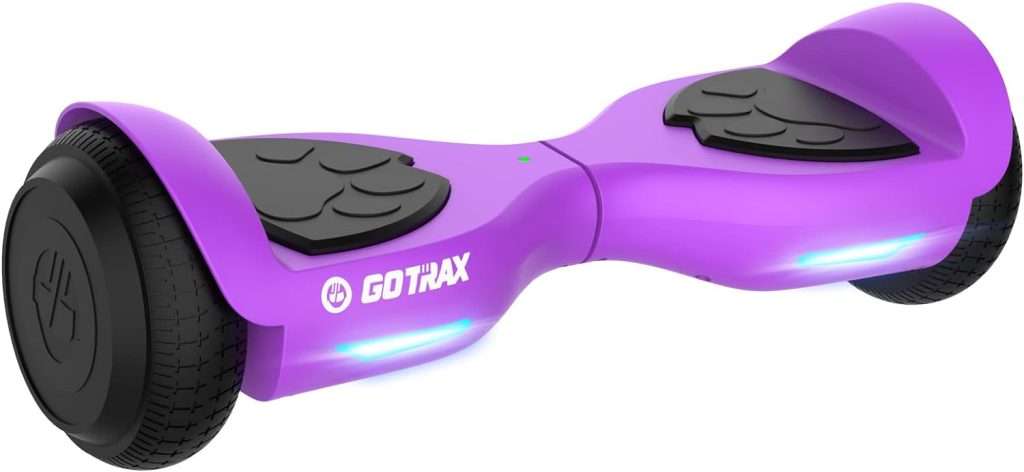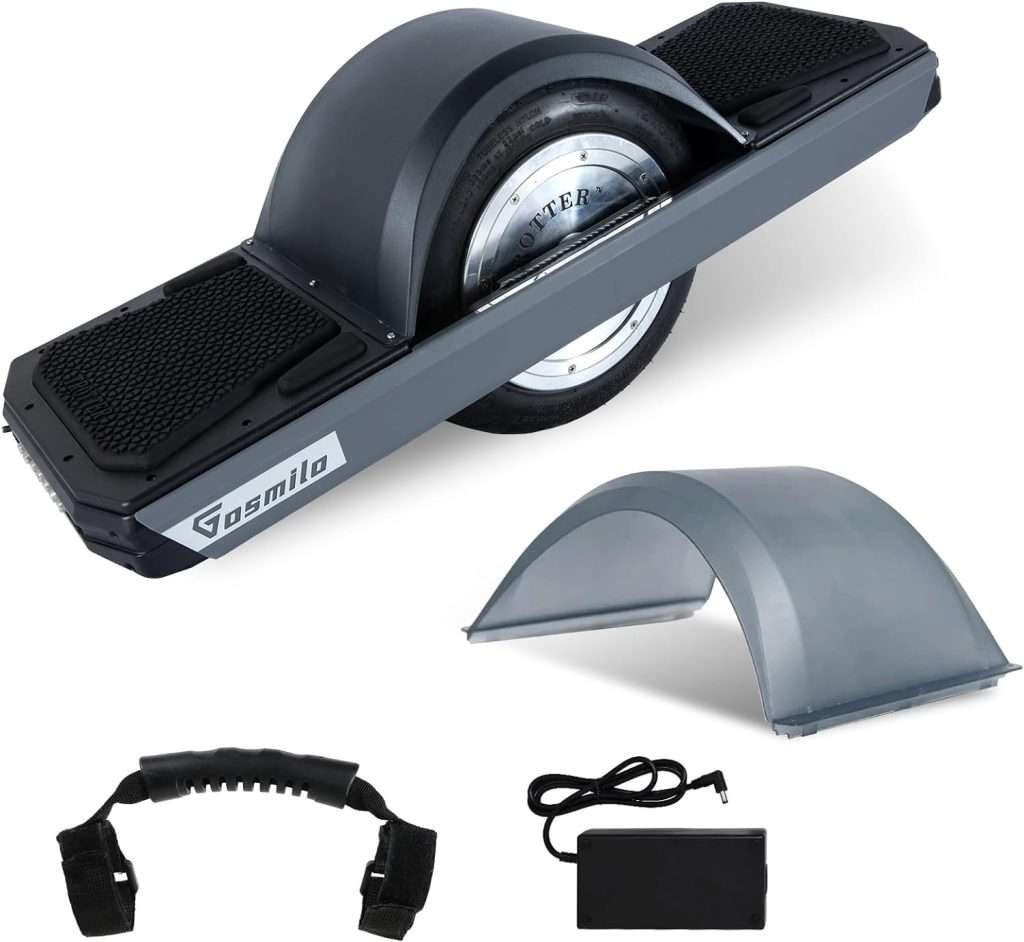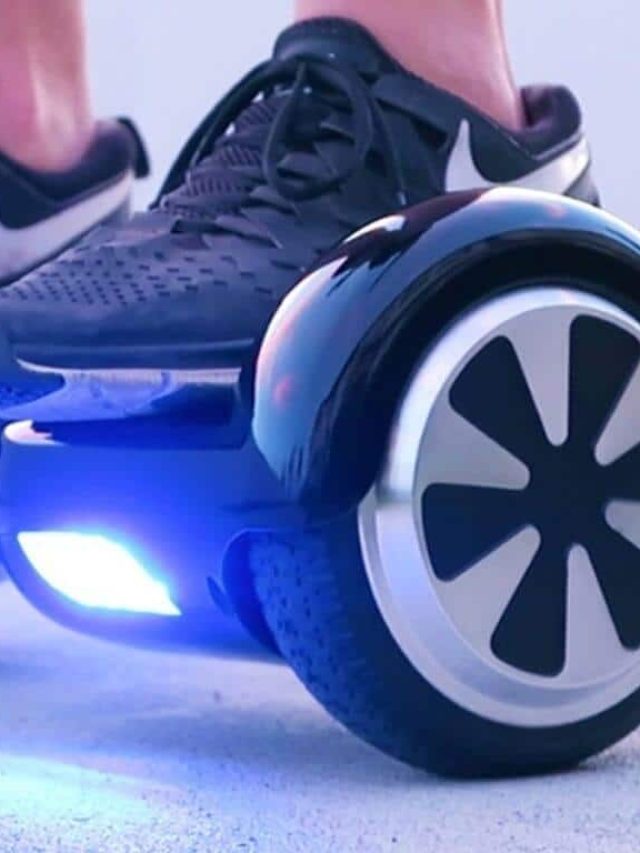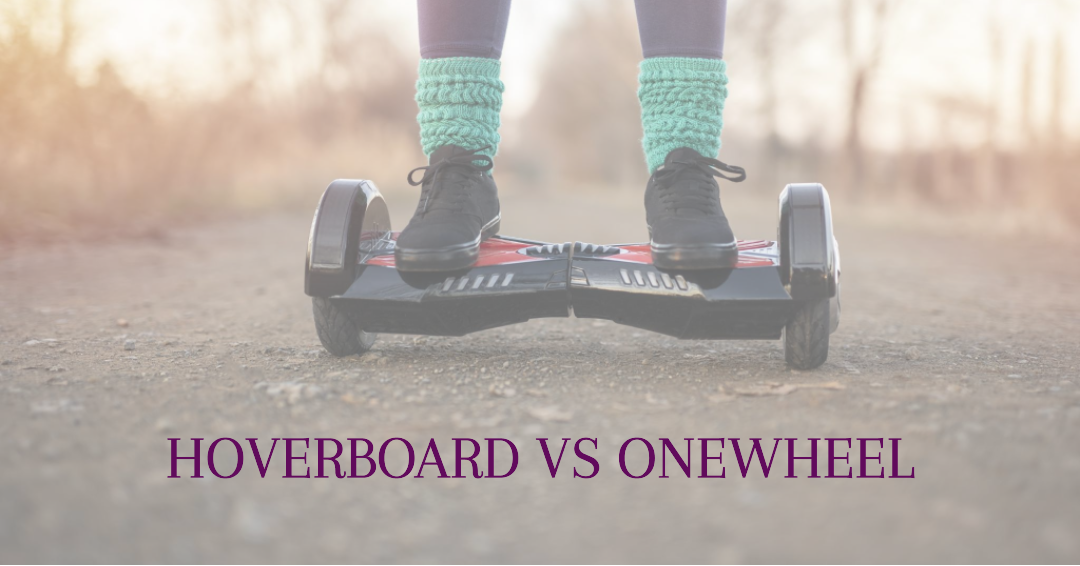WAYPLUS Kick Scooter for Ages 6+,Kid, Teens & Adults. Max Load 240 LBS. Foldable, Lightweight, 8IN Big Wheels for Kids, Teen and Adults, 4 Adjustable Levels. Bearing ABEC9
$79.99 (as of July 26, 2024 16:09 GMT +00:00 - More infoProduct prices and availability are accurate as of the date/time indicated and are subject to change. Any price and availability information displayed on [relevant Amazon Site(s), as applicable] at the time of purchase will apply to the purchase of this product.)BOSONER Kids/Youth Knee Pads Elbow Pads Wrist Guards Set for 3-15 Years, Child Protective Gear Set for Roller Skates, Cycling, BMX Bike, Skateboard, Inline Skating, Scooter Riding Sports…
33% OffHoverboards and Onewheels have exploded in popularity in recent years as fun, portable electric rideables. But how do these futuristic-looking devices compare?
This in-depth guide will examine the key differences between hoverboards and Onewheels across factors like design, performance, features, terrain handling, safety, learning curve, and costs to help you decide which is better for your needs.
Below we’ll look at how hoverboards and Onewheels stack up in various categories. We’ll also provide the pros and cons of each and give our recommendations on which rideable best suits different riding goals so you can pick the winner for your lifestyle.
Overview and Key Differences
Hoverboards and One wheels may look vaguely similar at first glance, but they have very distinct designs:
Hoverboards

- Two motorized, side-by-side wheels controlled by weight-shifting
- Step on the platform between two wheels
- Handlebarless
- Maximum speed: 6-10 mph
- Range: 5-15 miles
Onewheels

- One large motorized wheel in center controlled by weight shifting
- Step on platform covers the wheel
- Handlebarless most models
- Maximum speed: 15-20 mph
- Range: 6-18 miles
So in simple terms:
- Hoverboards have two wheels side-by-side
- Onewheels have one center wheel
- Hoverboards operate slower with less range
- Onewheels offer higher speeds and distance
But there are more in-depth considerations around performance, terrain handling, safety, and learning curves covered next.
Performance Comparison
Performance factors like speed, power, and range are where more significant differences between hoverboards and Onewheels emerge.
Speed
Hoverboards: 6-10 mph top speed is typical. Some cheaper models may max out under 6 mph. Higher priced hoverboards may reach 10 mph. But in general, expect speeds of 6-8 mph.
Onewheels: 15-20 mph top speeds are common, with some high-performance models reaching 20+ mph. The larger wheel size allows faster momentum.
Advantage: Onewheel
Power and Acceleration
Hoverboards: Dual smaller motors mean less power. Acceleration is modest and gradual. Cheaper hoverboards can feel underpowered.
Onewheels: A single large motor provides very strong acceleration power. High torque allows effortlessly quick acceleration up to top speed.
Advantage: Onewheel
Weight Capacity
Hoverboards: 220-265 lbs is the common maximum weight capacity. Riders above that threshold may have performance issues.
Onewheels: Generally handle 240-275 lbs rider weights, with some models supporting over 300 lbs. Can accommodate heavier riders.
Advantage: Onewheel
Range
Onewheels: Standard range is 6-10 miles. Upgraded batteries can extend range to 18-22 miles. Long rides are more feasible.
Hoverboards: Budget options may get only 5 miles of range. Mid-tier can reach 10 miles. High-end models may hit 15 miles max. Range is limited.
Advantage: Onewheel
Terrain Handling
Hoverboards: Designed for smooth, hard surfaces only. No off-road capacity. Struggle with steep hills or uneven terrain.
Onewheels: Excel on pavement but also handle trails, grass, and small obstacles adeptly. All-terrain versatility.
Advantage: Onewheel
Weather Resistance
Hoverboards: Not water or weather resistant. Riding in rain or through puddles can damage motors and electronics.
Onewheels: Weatherproof designs allow riding in rain or over wet terrain. Submersible up to 3 ft. Far more durable.
Advantage: Onewheel
Design and Hardware Comparison
Hoverboards and Onewheels also differ quite a bit when it comes to hardware and physical design:
Wheels
Hoverboards: Two smaller 4-6.5” wheels made of solid plastic or rubber. Simple fixed axle.
Onewheels: One large 11-14” wheel with rubber tire and internal hub motor. Advanced suspension system.
Advantage: Onewheel
Tires
Hoverboards: No tires since wheels are solid plastic or rubber. No grip.
Onewheels: Air-filled rubber tire provides cushioning and tread grip, even off-road. Easily replaced.
Advantage: Onewheel
Weight
Hoverboards: Weigh 15-30 lbs. Easy to pick up and carry.
Onewheels: Weigh 25-35 lbs. Heavier and bulkier, not as portable.
Advantage: Hoverboard
Dimensions
Hoverboards: 6.5-10” wide x 24-28” long. Compact footprint.
Onewheels: 4.5-5” wide x 11.5-14.5” long. Even more compact.
Advantage: Onewheel
Operation
Hoverboards: Control speed and steering by shifting weight between pads.
Onewheels: Control speed and steering by leaning knees forward, back, left, or right. More intuitive.
Advantage: Onewheel
Hardware Quality
Hoverboards: Plastic casings and cheaper components make them prone to breakage.
Onewheels: Aluminum/magnesium casings and high-end parts like solid tires add durability.
Advantage: Onewheel
Water Resistance
Hoverboards: Not water or weather resistant. Riding in rain can damage circuits.
Onewheels: Fully waterproof casings allow riding in rain or through puddles with no issues.
Advantage: Onewheel
Bumps and Cracks
Hoverboards: Small wheels get caught on sidewalk cracks and small objects easily.
Onewheels: Larger wheel rolls over rocks, cracks, small branches with ease.
Advantage: Onewheel
Hills
Hoverboards: Lack power to ascend steeper hills. Limited to gradual inclines.
Onewheels: Much stronger torque easily powers up 25%+ grade hills.
Advantage: Onewheel
Features and Capabilities Comparison
Hoverboards and Onewheels also offer some differing built-in features and capabilities:
Learning Curve
Hoverboards: Very gentle learning curve. Most riders can cruise in under an hour. Intuitive.
Onewheels: Steep learning curve. Takes days of practice to get proficient. High skill ceiling.
Advantage: Hoverboard
Safety
Hoverboards: Safe top speed under 10 mph reduces injury risks. Harder to lose control.
Onewheels: Higher speeds increase risks losing control and falling. Protective gear recommended.
Advantage: Hoverboard
Entertainment Value
Hoverboards: Mostly enjoyed for cruising and commuting. Exercise potential.
Onewheels: Thrilling for carving, trail riding, and stunt-style tricks. Extreme sport appeal.
Advantage: Onewheel
Off-Road Handling
Hoverboards: Not designed for unpaved surfaces. Plastic wheels lack grip.
Onewheels: Excels on grass, dirt trails with rugged tire treads providing grip.
Advantage: Onewheel
Braking and Stopping
Hoverboards: Gradually decelerates when weight shifted back. No abrupt stops.
Onewheels: Sudden stops possible by leaning back hard. Improves control.
Advantage: Onewheel
Mobility Convenience
Hoverboards: Very lightweight and compact. Easy to store and carry anywhere.
Onewheels: Heavier and bulkier. Carrying for long periods gets tiring.
Advantage: Hoverboard
Apps and Customization
Hoverboards: Most have no apps or settings to customize performance.
Onewheels: Apps allow custom shaping and tailoring ride characteristics.
Advantage: Onewheel
Price
Hoverboards: Budget models from $100 to $250. Mid-tier $250-$500. High-end $500-$1,000.
Onewheels: Start around $1,000 and go up to $2,500+. Significant price premium.
Advantage: Hoverboard
Safety Comparison
Safety is another key consideration when choosing between these self-balancing electric rideables. Here is how hoverboards and Onewheels compare
in terms of safety risks and precautions:
Speed and Control
- Hoverboards max out around 10 mph, reducing risk of crashes and injury
- Onewheels can hit 20+ mph, requiring more skill to control
- Falling off at high Onewheel speeds has greater risk of injury
Protection
- Hoverboards can be safely ridden with minimal protection
- Onewheels require helmets and pads due to high speeds and falls
Learning Curve
- Hoverboards can be ridden within an hour with little risk
- Onewheels take dedicated practice to gain skill for injury prevention
Weight Limits
- Most hoverboards support 220-265 lbs riders
- Onewheels accommodate heavier 240-300+ lb riders in some models
Hardware Safety
- Cheaper hoverboard components can overheat or catch fire if low quality
- Onewheel batteries and parts undergo rigorous testing for safety
Off-Road Terrain
- Hoverboards lack tread so cannot safely handle trails
- Onewheel tires grip off-road terrain to prevent slips and falls
Weather Riding
- Hoverboards should not be ridden in rain or over puddles
- Onewheels are fully waterproof and can handle all wet conditions
In summary, Onewheels carry higher potential safety risks due to greater speeds and riding skill required. But their rugged hardware and tires make them more adept at handling off-road terrain and poor weather conditions safely.
Hoverboards are safer for casual, low-speed riding for novice users. But cheap models may lack hardware protections.
Pros and Cons Comparison
To summarize the key factors, here are the main pros and cons of hoverboards versus Onewheels:
Hoverboard Pros

- Extremely easy to learn
- Lower speeds increase safety
- Compact and lightweight
- Highly portable
- Affordable price point
- Fun for casual riding
Hoverboard Cons
- Limited top speed, power, range
- Not for off-road terrain
- Less durable components
- No customization or apps
- Can struggle on hills and cracks
Onewheel Pros

- Higher top speed and acceleration
- All-terrain versatility
- Advanced customization via app
- Durable build quality
- Exciting stunt riding capabilities
- Thrilling off-road performance
Onewheel Cons
- Steep learning curve
- Higher injury risks
- Heavy and bulky
- Expensive price point
- Stability takes practice
So in summary:
- Hoverboards excel at low-speed neighborhood cruising.
- Onewheels are optimal for off-road adventures and high-speed thrill-seeking.
Recommendations
Based on the comparisons above, here are some recommendations on which rideable is better suited for different riding styles and scenarios:
For Beginners
The easy learning curve makes hoverboards preferable for total beginners and casual riders. No skill or experience is required to start cruising immediately.
For Commuting
Hoverboards are the top choice for light urban commuting and mobility around town or campus thanks to their ultra-portable size.
For Exercise
While hoverboards provide some aerobic benefits, the higher speeds and active stance of Onewheels give a more intense workout.
For Off-Road Riding
The rugged tire and torque of Onewheels allow all-terrain riding on grass, trails, and uneven surfaces that hoverboards can’t handle.
For Thrills and Tricks
The high-speed capabilities and maneuverability of Onewheels make them preferred for learning stunts or pushing riding to the next level.
For Kids and Teens
The safety and ease of learning make hoverboards ideal for kids 10 years and older. Onewheels require mature riding skills.
For Heavy Riders
Onewheels can support heavy riders up to 300+ lbs that might exceed a hoverboard’s 220-265 lb capacity.
In summary, beginners are best served starting on hoverboards for low-risk training, while experienced thrill-seekers will prefer Onewheels for advanced skills and adrenaline. Choose based on your goals!
The Verdict: Hoverboard vs Onewheel
By this point, you should have a clear picture of how hoverboards and Onewheels compare – here is a quick recap:
- Hoverboards have two side-by-side wheels making them highly portable and easy to learn, but limited speed and range. Ideal for flat commutes.
- Onewheels use a center single wheel for all-terrain versatility and high speeds, but decreased stability. Excellent for advanced skills.
Onewheels outmatch hoverboards in terms of performance, features, hardware quality, and off-road handling. But they come at a significantly higher price and injury risk.
For most beginners looking for casual neighborhood cruising, hoverboards are the safest, most affordable choice to start. Their compact size makes them easy to store and carry.
But for experienced riders seeking very fast speeds, long range, and off-road excitement, Onewheels provide an advanced full-body riding experience and adrenaline rush. The high price pays for performance, durability, and versatile terrain handling.
So consider your personal riding style, needs, and budget to decide between these two popular electric rideables! Both offer awesome futuresque transportation…you just need to choose one wheel or two.
Appendix: Side-By-Side Specs Comparison Tables
To help summarize the key performance specs and hardware differences, here are two side-by-side comparison tables for hoverboards vs Onewheels:
Performance Specs
| Spec | Hoverboard | Onewheel |
|---|---|---|
| Top Speed | 6-10 mph | 15-20 mph |
| Range | 5-15 miles | 6-18 miles |
| Weight Limit | 220-265 lbs | 240-300 lbs |
| Terrain Handling | Sidewalks and roads only | All terrains including off-road |
| Water Resistance | None, not waterproof | Fully waterproof casing |
| Hill Climbing | Struggles with steep hills | Handies inclines up to 25% grade |
Hardware Design Specs
| Feature | Hoverboard | Onewheel |
|---|---|---|
| Wheels | Two 4-6.5″ plastic wheels | One 11-14” rubber tire w/ hub motor |
| Tires | None, solid plastic wheels | Air-filled rubber tire with treads |
| Weight | 15-30 lbs | 25-35 lbs |
| Dimensions | 6.5-10″ W x 24-28″ L | 4.5-5″ W x 11.5-14.5″ L |
| Braking | Gradual deceleration when leaning back | Can brake suddenly leaning back hard |
| Hardware Quality | Prone to breakage | Very durable aluminum+magnesium casing |
| Waterproofing | Not waterproof | Fully waterproof casing |
| Max Rider Weight | 220-265 lbs | 240-300 lbs |
| Operation Control | Lean feet side-to-side | Lean knees side-to-side |
| Mobile App | None | Custom shaping and monitoring |
Hopefully these breakdowns help show the clear contrasts between these two personal electric vehicles. Understanding the pros, cons, features, and performance allows choosing the right option based on your needs.
The Future of Electric Rideables
As battery technology continues improving and costs keep becoming more affordable, electric rideables like hoverboards and Onewheels will only grow in popularity for recreation, commuting, and exercise uses. More models will emerge with unique features and capabilities.
Both hoverboards and One wheels provide a thrilling glimpse into the future of eco-friendly transportation – just pick your perfect ride between one or two wheels! With proper safety precautions, they provide hours of clean, efficient fun.
So strap on your helmet, hop on your hoverboard or Onewheel, and enjoy the ride into the future! Just watch out for any passing skateboarders.

I’m the founder of HoverboardsGuide.com, a comprehensive website dedicated to electric scooters and hoverboards. With a deep-rooted passion for electric gadgets, I’ve accumulated extensive experience in this field. I aim to assist users in selecting the best gadgets and providing reliable guidance.
I’ve tested and reviewed numerous models, gaining in-depth knowledge about their features, performance, and overall quality. Feel free to reach out to me with any queries, as I’m dedicated to addressing your concerns promptly. Join me on this exciting journey of exploring the world of electric rides and making informed decisions



















